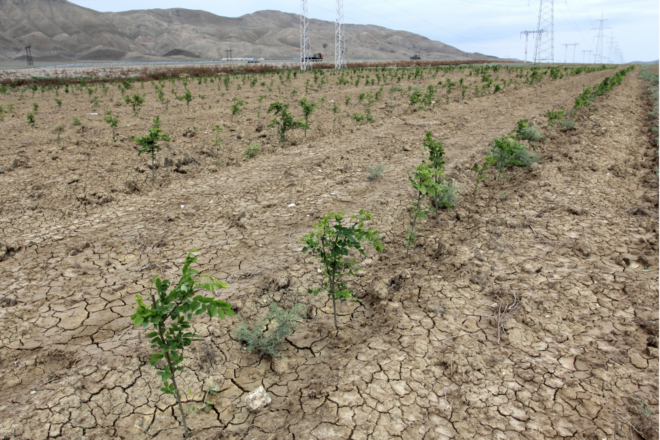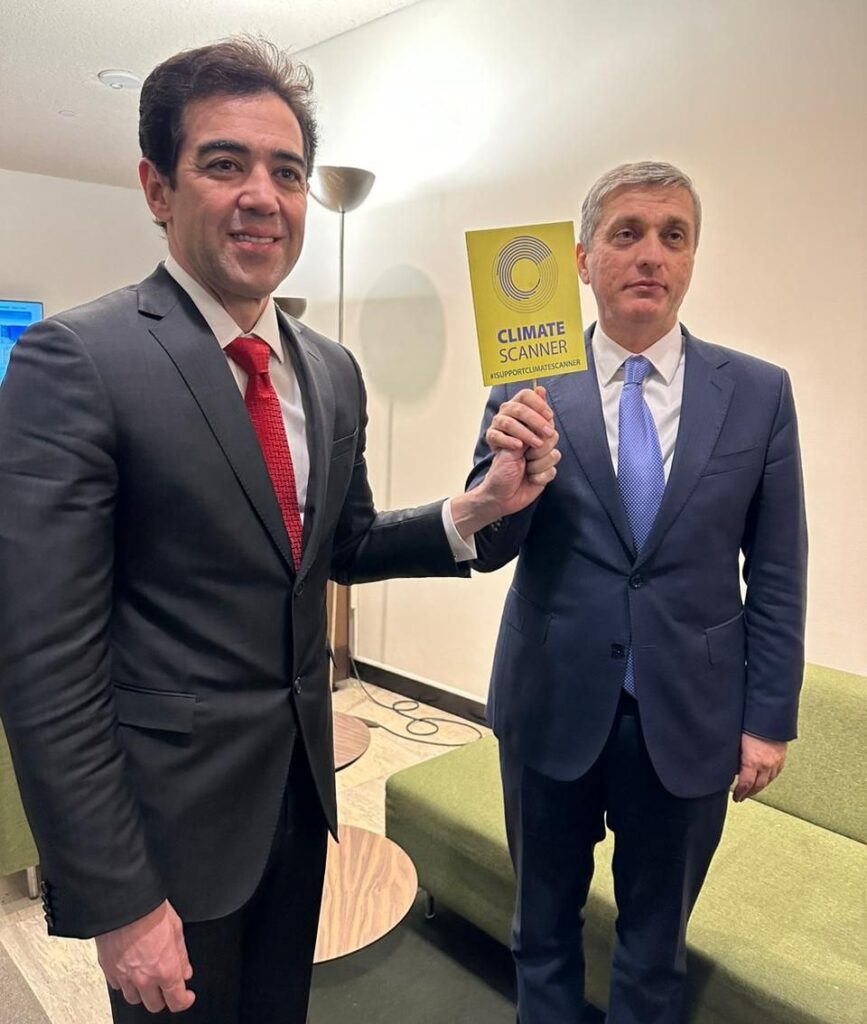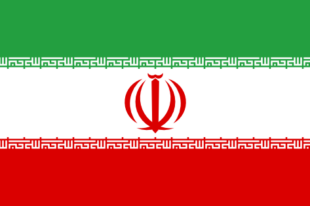Involvement Of Supreme Audit Institutions in Climate Performance Assessment: International and Local Experiences, Realities and Challenges

Author: Vugar Gulmammadov, Chairman of the Chamber of Accounts of the Republic of Azerbaijan
Introduction
Climate change is one of the biggest global problems of modern time. Greenhouse gas emissions, melting glaciers, forest fires, deforestation and misallocation of water resources have a negative impact on the environment, economic and social conditions.
Despite the national and international measures taken by governments to reduce the greenhouse gas emissions in the last two decades, the warming process in the climate system is still observed. According to the 2023 Report of the Intergovernmental Panel on Climate Change (IPCC), the global surface temperature in 2011-2020 is 1.1°C higher than in 1850-1900.
Although the global climate action is a shared responsibility of many stakeholders in the public and private sectors, the dominance of the former in this field up to the present is felt to be significant. Thus, national governments play an important role in climate action by allocating public resources, implementing state policies, and through various governance mechanisms to combat climate change and its consequences. Political commitment by governments, an institutional framework, good strategic management, and broad access to finance and technology can contribute to effective climate action.
Considering the use of significant financial, including state (public) resources for the implementation of this activity, SAIs conducting external public financial control can contribute to this issue via their audits.
The conducted analyzes show that the experience of conducting environmental audits by SAIs, including their involvement in climate performance assessment, has been expanding in recent years.
The assessment of climate action by SAIs aims to achieve the outcome – “contributing to the improvement of accountability, effectiveness and inclusiveness of government climate change adaptation measures” through the following three outputs:
- High-quality audits and recommendations in various areas (disaster risk reduction, water resources management, sea level rise, implementation of climate change adaptation plans/activities etc.);
- timely submission of audit reports in accordance with legislation;
- audit impact throughout the audit process.
In general, although the SAI mandates differ, they all have a mission to provide independent evaluation of the management and use of public resources. Audit on management and use of resources in most cases is conducted as a component of compliance, financial and performance audits. For this reason, SAIs do not need special authority to assess the effects of funds allocated to climate action. In a number of countries, including Azerbaijan, this has been established by Law and attributed to the direct duties of SAIs.
According to INTOSAI WGEA, in the last five years, the number of environmental audits conducted by SAIs is greater than 400, and more than 50 of them are directly related to climate performance assessment. Performance audits are significantly predominant here.
Considering the topicality of the issue, SAI Brazil, current INTOSAI Chair, together with INTOSAI WGEA, experts and international organizations (UNDESA, the World Bank, UNDP, etc.) launched the ClimateScanner initiative.

ClimateScanner assessment final results are expected to be announced at the 29th session of the Conference of the Parties to the United Nations Framework Convention on Climate Change – COP29, to be held in our capital, Baku, Azerbaijan, by SAIs.

A number of fiscal diagnostic tools also encourage the active involvement of SAIs in assessing the climate action. For example, the PEFA Climate (Climate Framework) prepared by the Public Expenditure and Financial Accountability (PEFA) Secretariat also envisages the involvement of SAIs in this activity. PEFA’s Climate Framework tool is a set of indicators based on the PEFA framework to gather information on the readiness of the public financial management system to support and promote the implementation of government climate change policies.
The experience of the Chamber of Accounts of the Republic of Azerbaijan in assessing the national climate activity related to climate changes
In our country, a number of important measures have been taken to achieve the goals in climate change combat, and the State Commission on Climate Change has been established. In the past, the Republic of Azerbaijan prepared its National Information and Biennial Update Reports on Climate Change and submitted to UN Framework Convention on Climate Change (UNFCCC).
In accordance with the Paris Agreement, the Republic of Azerbaijan submitted its Nationally Determined Contributions (NDC) document in 2016 and set a target of reducing greenhouse gas emissions by 35% by 2030 compared to 1990.
Climate change mitigation measures are reflected in the “Socio-economic Development Strategy of the Republic of Azerbaijan for 2022-2026”, “State Programs on the Socio-Economic Development of Regions” and other documents.
Although substantial work has been done by the Azerbaijani government within the framework of the fight against climate change, the global development trends of the world economy have determined the issues of climate change as an actual problem in the Republic of Azerbaijan. The results of various assessments show that the agricultural sector, water resources sector, coastal zones and forest sector are more sensitive to climate change in Azerbaijan.
To assess the effectiveness and efficiency of the government’s national climate and environmental activities, a number of audits (mainly performance audits) have been carried out by the Chamber of Accounts recently.
Assessment of efficient use of irrigation water
Due to the recent drought, the trend of depletion of fresh water resources has also been observed in Azerbaijan. According to the results of scientific studies, Azerbaijan is currently ranked 20th in the list of countries that may face water shortage in 2040. Efficient use of fresh water resources is one of the urgent and priority issues for Azerbaijan, under the circumstances that more than 75% of fresh water resources in our country are formed from sources outside the country. Nevertheless, the fact that the main part of the irrigation canals are underground caused a large amount of water loss, and the lack of necessary infrastructure for accurate measurement of the amount of water used did not allow to determine the amount of water loss.
Assessment of the efficiency of the “”Pirshaghi” wastewater treatment plant” project
Due to insufficient funding, the lack of infrastructure for drinking water supply and sewage system in the scope of the facility has made it impossible to deliver sewage water to the facility and use it for its intended purpose.
Performance audit of Forestry Development Service
The conducted audit shows that a strong legislative base has been formed to regulate forest-related issues in the country, and the Forest Code has been adopted. Alongside with the strong legal framework, the previous forestry works that are the basis of forestry activities, have not been completed, efficient use of forest areas has not been ensured, although certain measures have been taken against illegal deforestation, measures to protect and safeguard forests from the effects of other anthropogenic factors and pests have been insufficient.
Challenges
The conducted control measures have determined that there are a number of challenges in the government’s activities related to the national climate and environment.
- The restoration of the areas liberated from occupation, the forests in those areas and the ecosystem as a whole requires a lot of resources and time. In 2021-2022, more than 3 billion dollars have been allocated to the restoration of liberated territories from the state budget which creates new challenges for the government to organize and implement the efficient use of those funds, and for Chamber of Accounts to assure the efficient use of the funds.
- As renewable energy, the production of electricity in hydropower plants requires the availability of large sources of running water. In the conditions where 75% of fresh water resources are formed outside of Azerbaijan, large water sources are mainly transboundary water. The pollution of the transboundary rivers beyond the relevant norms until they reach the territory of Azerbaijan, along with the greater negative effects on the environment, requires additional time and resources to adapt that water to be used for domestic and economic purposes.
- Azerbaijan is among the most mine-contaminated countries in the world, and it is estimated that there are more than 1.5 million unexploded mines and munitions in Azerbaijan. In the period from 08.11.2020 to 27.02.2024, 345 people became victims of 205 mine explosions. The threat of landmines has made it impossible to use the lands in the liberated territories for both residential and agricultural purposes, as well as for ecosystem restoration.
Key Factors and Opportunities
The above-mentioned issues were mostly related to the factors characterizing the impact on the country. In addition, there are other factors that affect the activity of almost every SAI in this field.
Above all, it is crucial to have a strategic management framework and for public financial management (PFM) system to consider the climate issue in the field of climate action. Although concepts such as climate finance, green budget, etc. are currently becoming popular in the field of public finance management, there are still few examples that can be noted as good practice in this field. It is very important to include budget indicators, along with specific policy goals in the strategic documents adopted in the country in the field of climate action. Also, references to these documents should be increased during the preparation of the mid-term expenditure framework (MTEF) and other strategic budget documents. This will also enable to determine the sufficiency of the budget commitments to implement the adopted strategic documents on the national climate action. At the same time, the inclusion of more institutions in the program budget initiative can create acceptable conditions for monitoring the costs of climate actions. Another approach is the application of budget tagging. Climate change budget tagging should be viewed more within the framework of budget classification. The first reference point is the Government Finance Statistics Manual (GFSM) (including the classification of the functions of government (COFOG)).
The second issue is the variety and timeliness of climate action data. As it is known, in some cases financial data on activities are submitted to SAIs shortly after the end of the year. It is difficult to say this about non-financial information. Of course, relatively favorable conditions are formed in the countries where the program budget is applied.
It is crucial for SAIs to agree on key performance indicators (KPIs) for non-financial climate action data. Timely and high-quality presentation of data also requires the integration of IT systems in the relevant field.
As the 3rd issue, we can mention the formation of personnel potential for climate action assessment. As it is known, audits in this field require not only knowledge on financial issues and performance audits, but also specific knowledge. Currently, there are various trainings in this field. There is a great need to proceed in this area.





